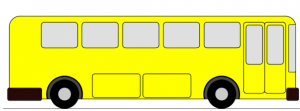
Where The Wheels Began
The famous children’s school bus rhymes lyrics, “The Wheels On The Bus”, originally began around 1939 in Boston, Massachusetts. The nursery rhyme is considered an American folk song and appeared in the 25th volume of “American Childhood”. The song was most likely written by Verna Hills and is considered an extremely popular song for children to sing in the United States, Canada, United Kingdom, and Australia. The song is so popular that it has even been remade in several other languages. It has become so popular that even Madonna, a American pop-star/singer, has made a version in 2002.
Songs: A Method Of Entertainment
Although people are unable to determine the reason behind the song; it is widely believed the song was written in order to entertain school children while they rode the bus. The song, “The Wheels On The Bus” surfaced during a time where children were spending much more time on the school buses with more children to drop off equaling longer routes. There are other theories that have accused the song being written for anti-industrialist, anti-religious, and even anti-capitalist.
Teaching Benefits Of The Song
The song has a structured repetition that makes it very easy for children to follow along and learn to participate in the motions. There are hand motions that accompany the song that offer children the ability to learn the motions and repeat them each time the song is sung. The song also assists children in learning through that repetition. Each time they are singing it, they are able to sing and do motions which allows them to develop essential motor skills starting at a very young age.
Variation Over The Years
The nursery rhyme walks children through verses including; the wheels turning, wipers swishing, horn beeping, and people going up and down on the bus. Over the years there have been many variations when singing this song. There have been a few additional verses added to the song over the years that include; doors opening and shutting, driver telling people to “move on back”, babies crying, and parents telling them to “shh”.
Freudian Notions
There are some individuals that believe the nursery rhyme is not only a single children’s entertainment but it possibly has Freudian notion of sublimation throughout the song. Some believe the bus is like a vehicle of life. They feel it is made for people to travel from birth to death. The wheels symbolize the ever-charging circle of life. Then the wipers are wiping away unclean thoughts. Next, the driver is said to be God giving a push back and keeping us in order. The young baby crying is associated with all newborns and the suffering of all humans from birth. Finally the parental figure is requesting singers to disguise suffering.